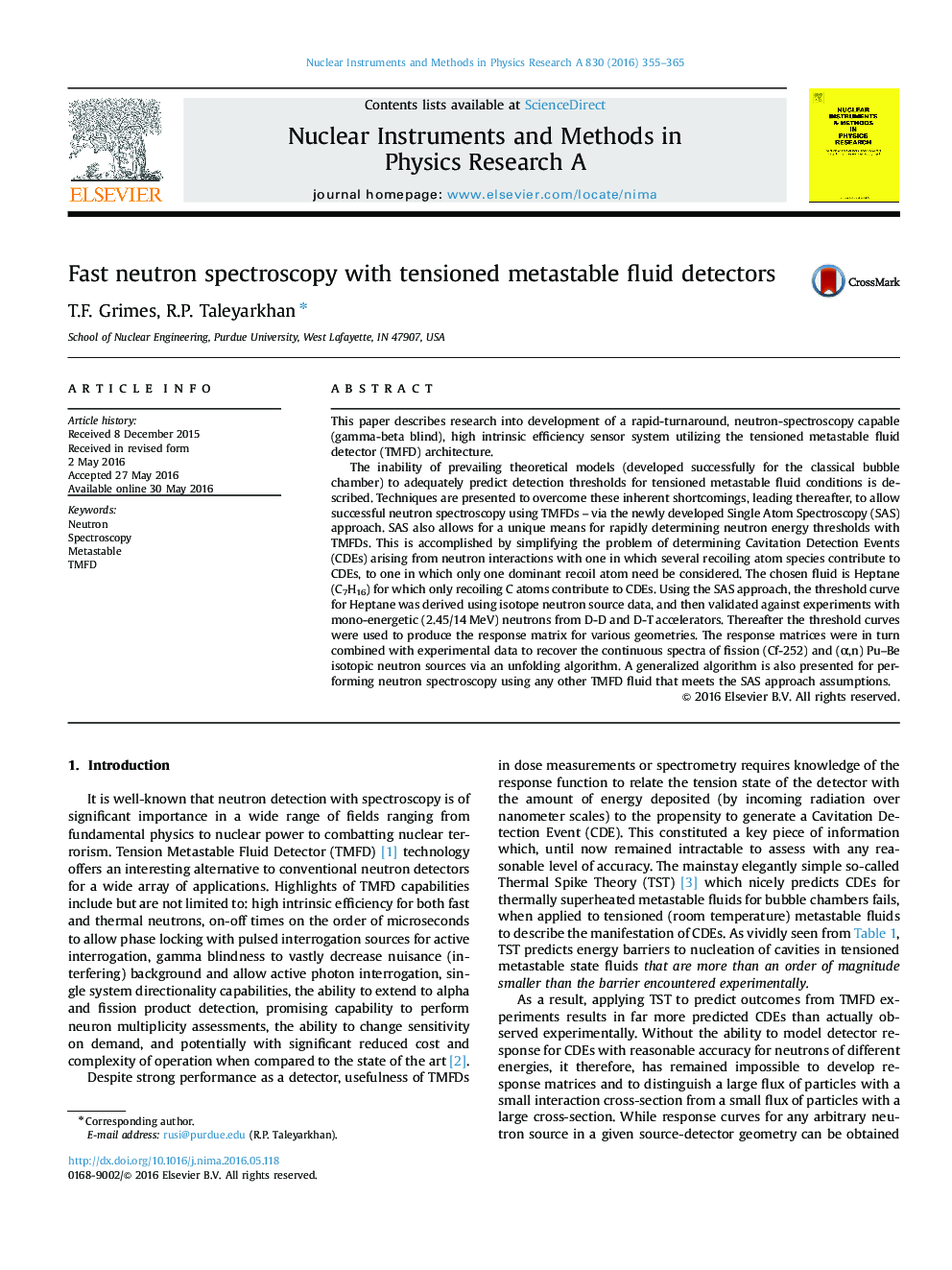| Article ID | Journal | Published Year | Pages | File Type |
|---|---|---|---|---|
| 8168882 | Nuclear Instruments and Methods in Physics Research Section A: Accelerators, Spectrometers, Detectors and Associated Equipment | 2016 | 11 Pages |
Abstract
The inability of prevailing theoretical models (developed successfully for the classical bubble chamber) to adequately predict detection thresholds for tensioned metastable fluid conditions is described. Techniques are presented to overcome these inherent shortcomings, leading thereafter, to allow successful neutron spectroscopy using TMFDs - via the newly developed Single Atom Spectroscopy (SAS) approach. SAS also allows for a unique means for rapidly determining neutron energy thresholds with TMFDs. This is accomplished by simplifying the problem of determining Cavitation Detection Events (CDEs) arising from neutron interactions with one in which several recoiling atom species contribute to CDEs, to one in which only one dominant recoil atom need be considered. The chosen fluid is Heptane (C7H16) for which only recoiling C atoms contribute to CDEs. Using the SAS approach, the threshold curve for Heptane was derived using isotope neutron source data, and then validated against experiments with mono-energetic (2.45/14 MeV) neutrons from D-D and D-T accelerators. Thereafter the threshold curves were used to produce the response matrix for various geometries. The response matrices were in turn combined with experimental data to recover the continuous spectra of fission (Cf-252) and (α,n) Pu-Be isotopic neutron sources via an unfolding algorithm. A generalized algorithm is also presented for performing neutron spectroscopy using any other TMFD fluid that meets the SAS approach assumptions.
Keywords
Related Topics
Physical Sciences and Engineering
Physics and Astronomy
Instrumentation
Authors
T.F. Grimes, R.P. Taleyarkhan,
